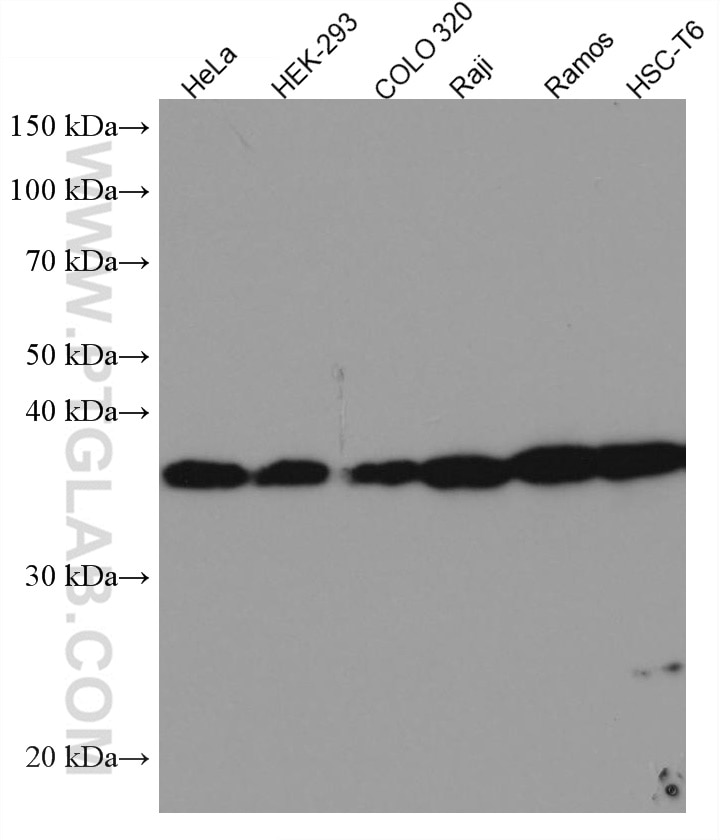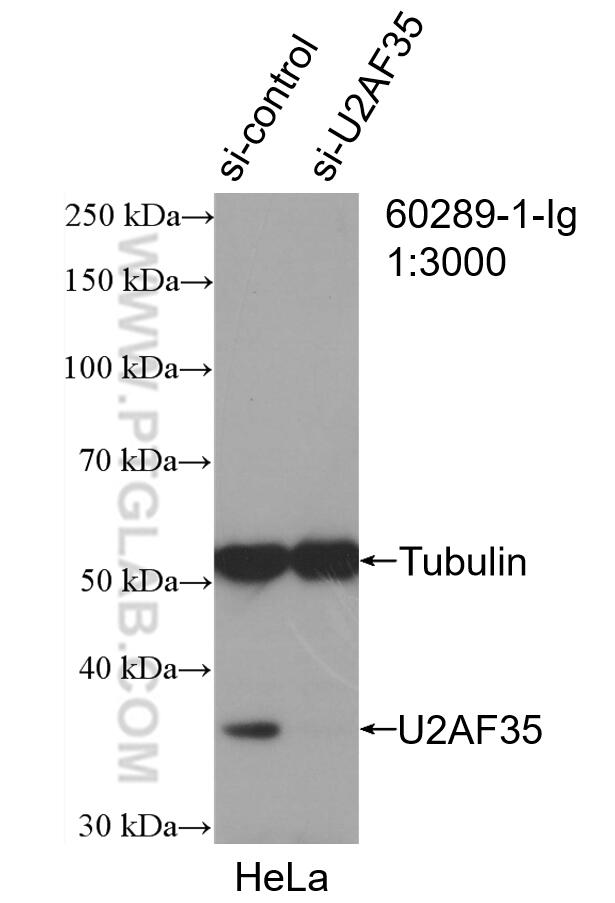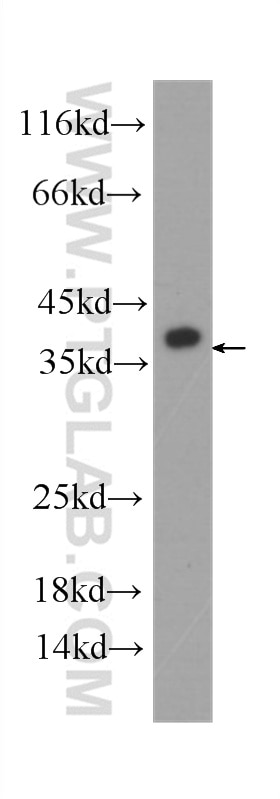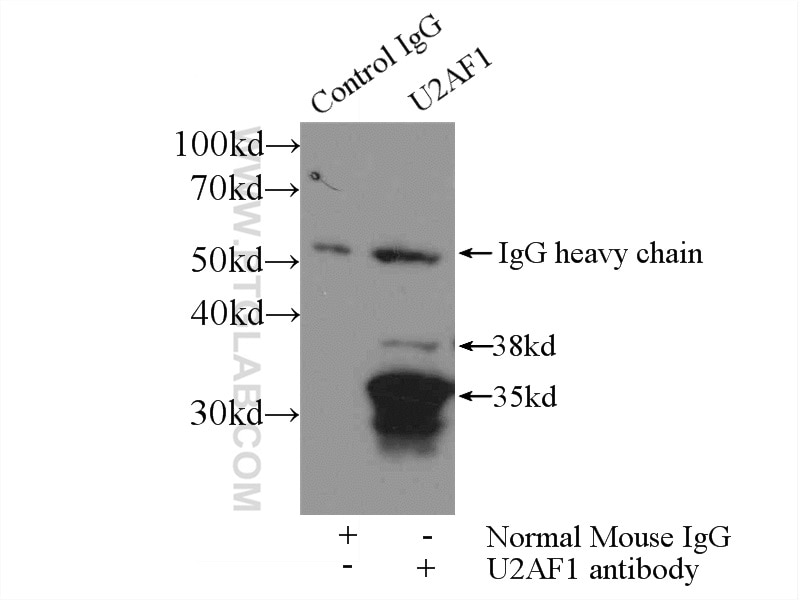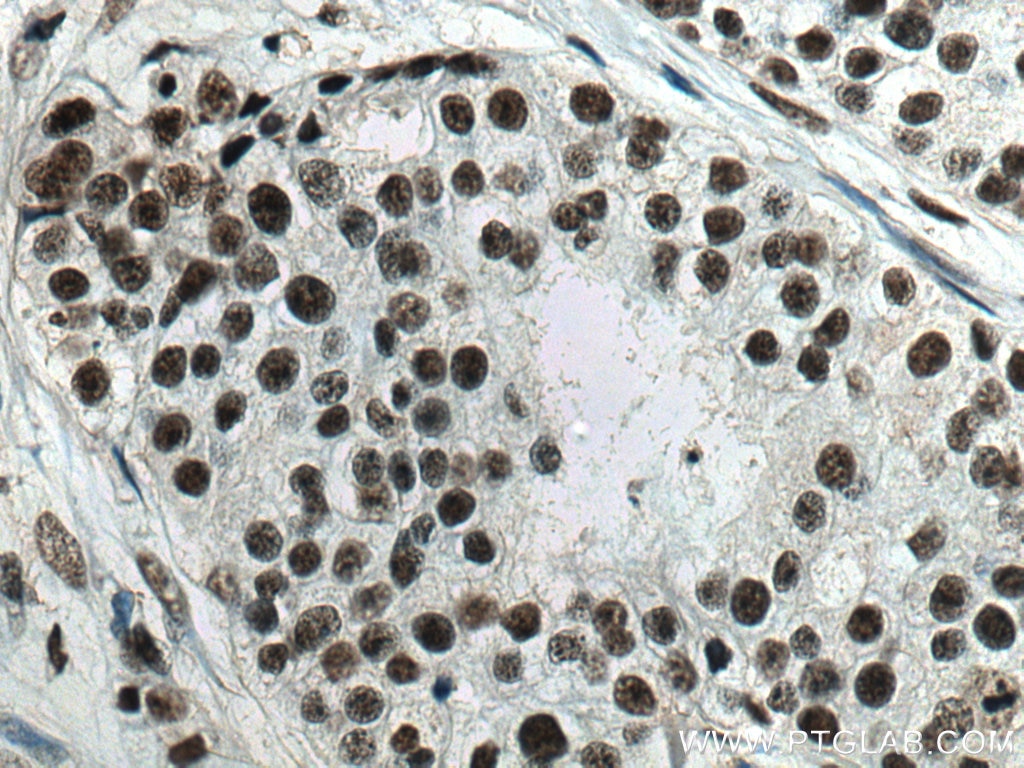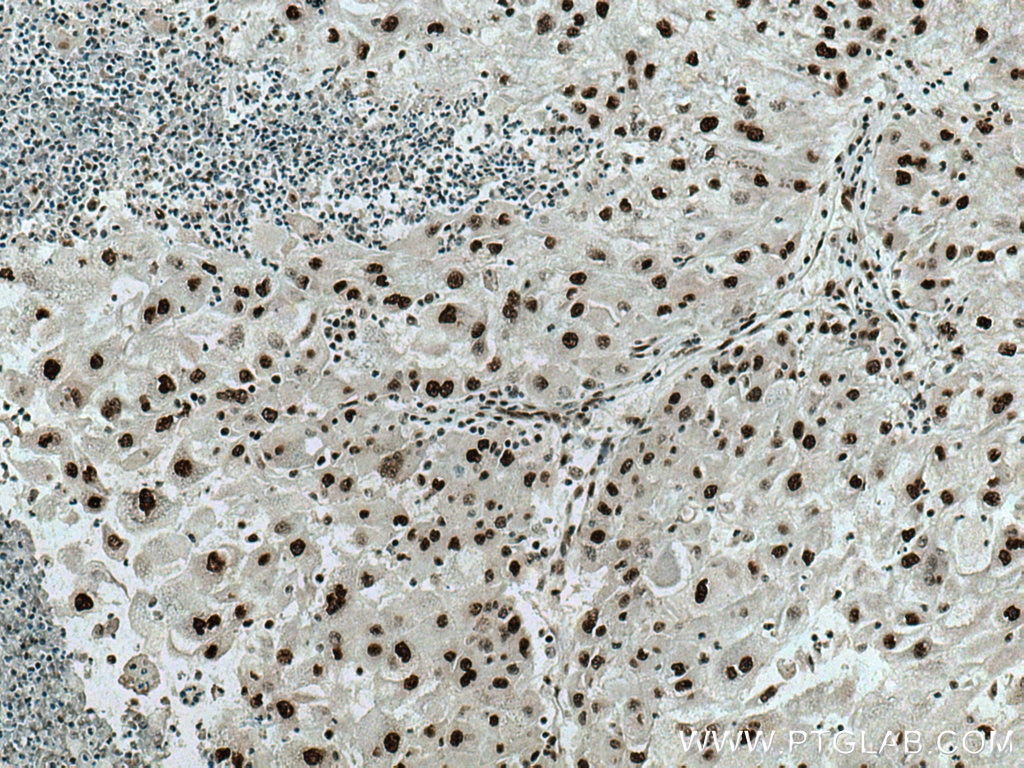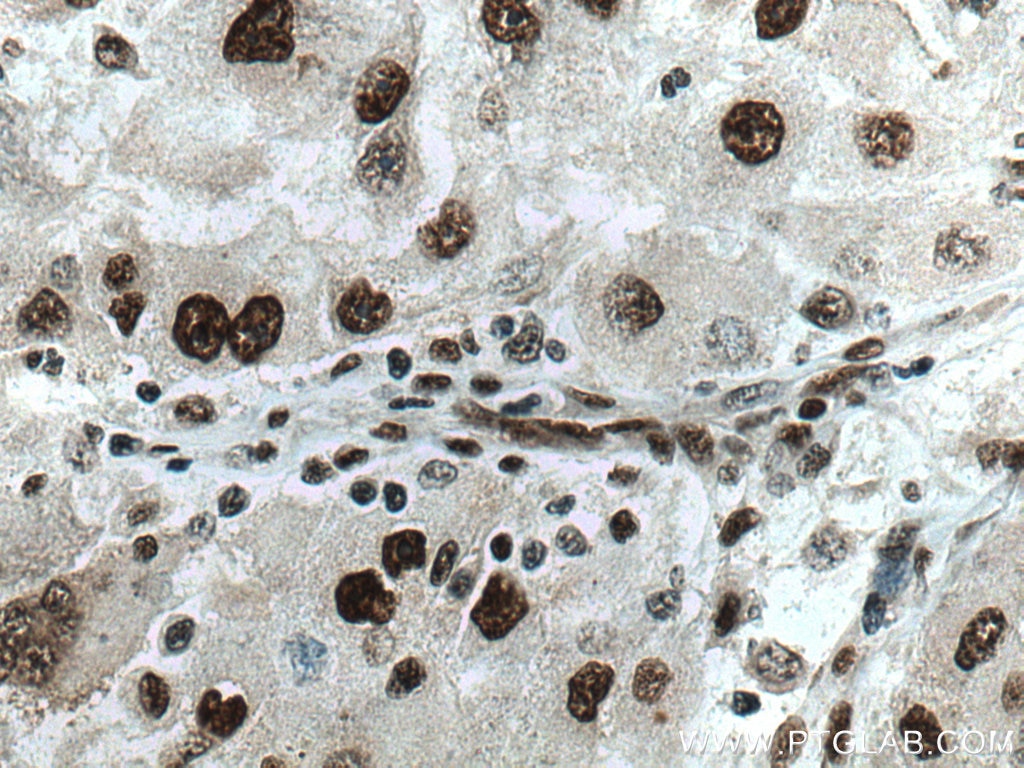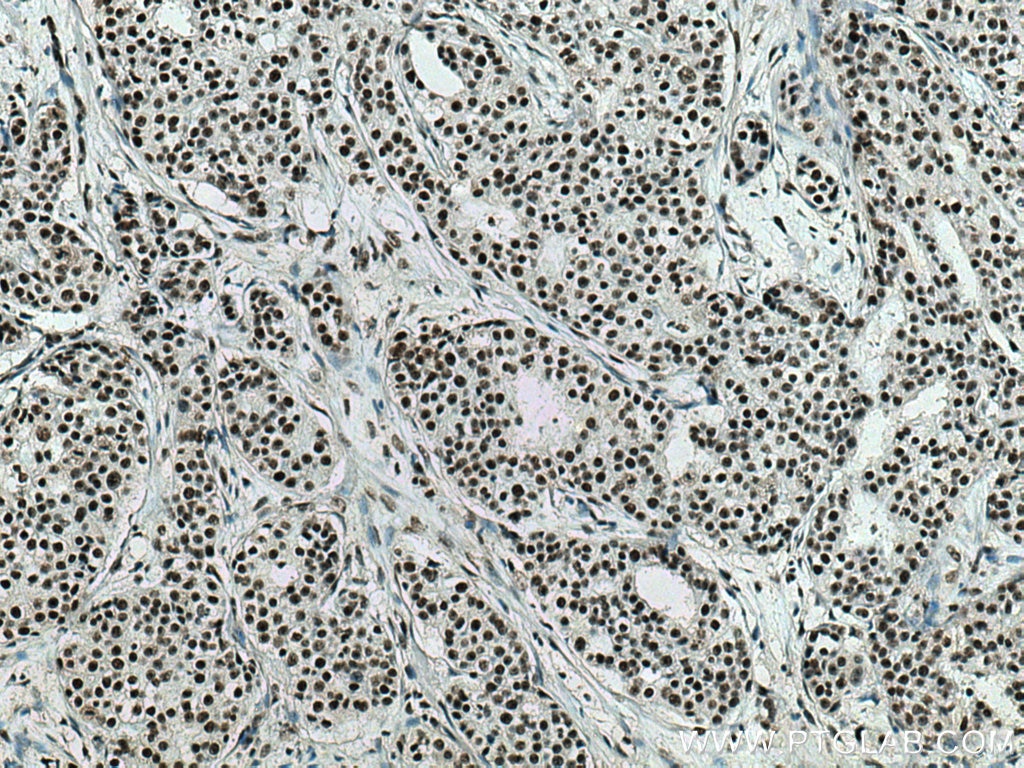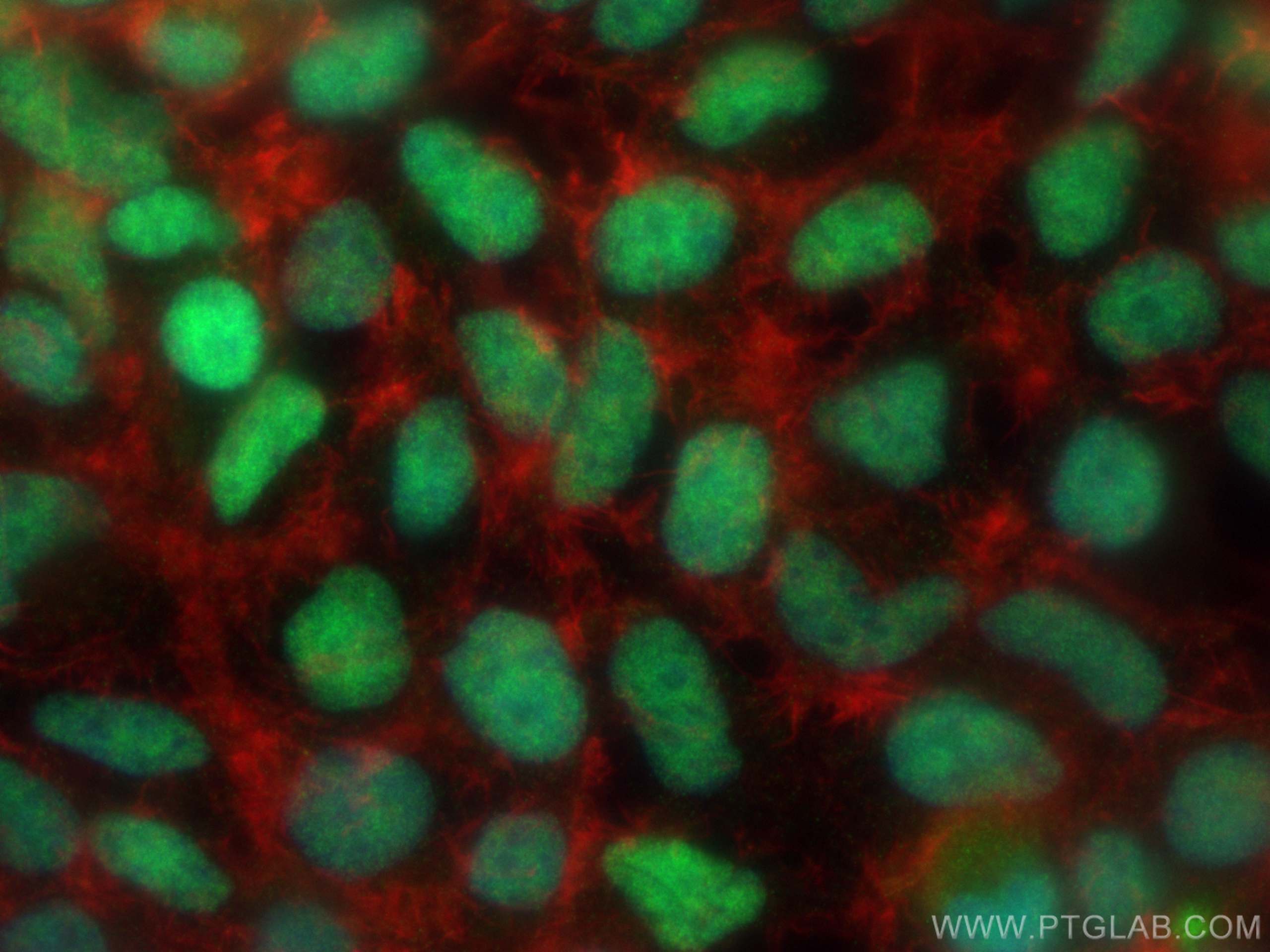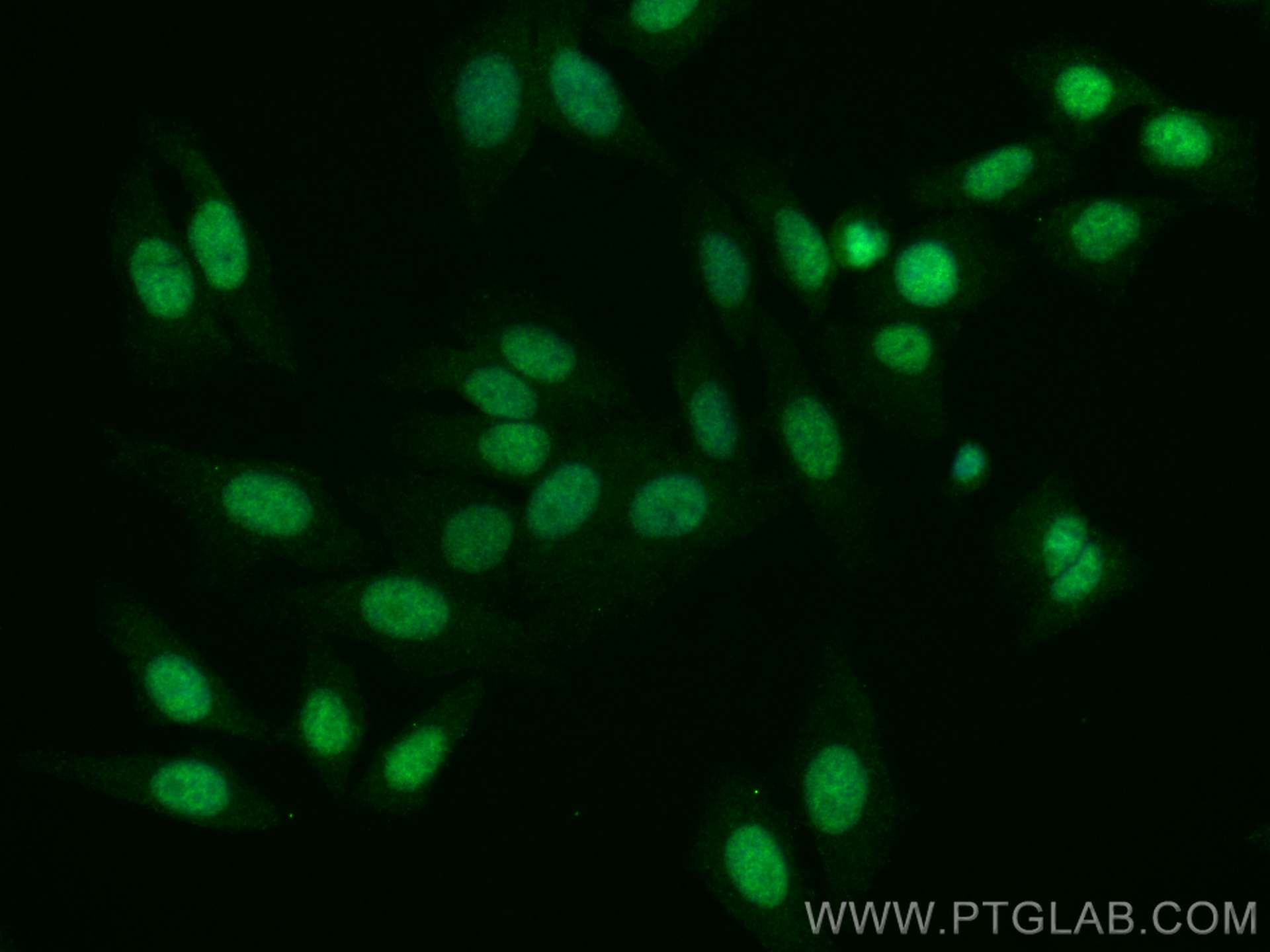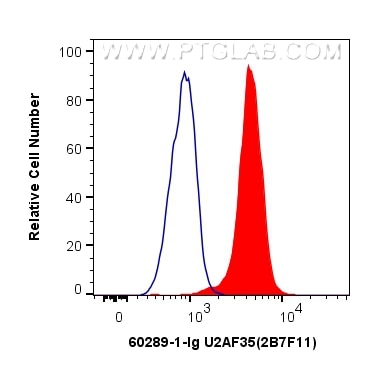Anticorps Monoclonal anti-U2AF35
U2AF35 Monoclonal Antibody for FC, IF, IHC, IP, WB, ELISA
Hôte / Isotype
Mouse / IgG2c
Réactivité testée
Humain, rat, souris
Applications
WB, IP, IHC, IF, FC, ELISA
Conjugaison
Non conjugué
CloneNo.
2B7F11
N° de cat : 60289-1-Ig
Synonymes
Galerie de données de validation
Applications testées
| Résultats positifs en WB | cellules HeLa, cellules COLO 320, cellules HEK-293, cellules HSC-T6, cellules Raji, cellules Ramos |
| Résultats positifs en IP | cellules HeLa |
| Résultats positifs en IHC | tissu de cancer du sein humain, tissu de cancer du foie humain il est suggéré de démasquer l'antigène avec un tampon de TE buffer pH 9.0; (*) À défaut, 'le démasquage de l'antigène peut être 'effectué avec un tampon citrate pH 6,0. |
| Résultats positifs en IF | cellules HEK-293, cellules HepG2 |
| Résultats positifs en cytométrie | cellules Ramos, |
Dilution recommandée
| Application | Dilution |
|---|---|
| Western Blot (WB) | WB : 1:1000-1:6000 |
| Immunoprécipitation (IP) | IP : 0.5-4.0 ug for 1.0-3.0 mg of total protein lysate |
| Immunohistochimie (IHC) | IHC : 1:500-1:2000 |
| Immunofluorescence (IF) | IF : 1:1000-1:4000 |
| Flow Cytometry (FC) | FC : 0.40 ug per 10^6 cells in a 100 µl suspension |
| It is recommended that this reagent should be titrated in each testing system to obtain optimal results. | |
| Sample-dependent, check data in validation data gallery | |
Applications publiées
| WB | See 4 publications below |
Informations sur le produit
60289-1-Ig cible U2AF35 dans les applications de WB, IP, IHC, IF, FC, ELISA et montre une réactivité avec des échantillons Humain, rat, souris
| Réactivité | Humain, rat, souris |
| Réactivité citée | Humain |
| Hôte / Isotype | Mouse / IgG2c |
| Clonalité | Monoclonal |
| Type | Anticorps |
| Immunogène | U2AF35 Protéine recombinante Ag0399 |
| Nom complet | U2 small nuclear RNA auxiliary factor 1 |
| Masse moléculaire calculée | 28 kDa |
| Poids moléculaire observé | 35-40 kDa |
| Numéro d’acquisition GenBank | BC001923 |
| Symbole du gène | U2AF1 |
| Identification du gène (NCBI) | 7307 |
| Conjugaison | Non conjugué |
| Forme | Liquide |
| Méthode de purification | Purification par protéine A |
| Tampon de stockage | PBS avec azoture de sodium à 0,02 % et glycérol à 50 % pH 7,3 |
| Conditions de stockage | Stocker à -20°C. Stable pendant un an après l'expédition. L'aliquotage n'est pas nécessaire pour le stockage à -20oC Les 20ul contiennent 0,1% de BSA. |
Informations générales
U2 auxiliary factor (U2AF), comprising a large and a small subunit, is a non-snRNP protein required for the binding of U2 snRNP to the pre-mRNA branch site. U2 (RNU2) small nuclear RNA auxiliary factor 1 (U2AF1,synonyms: RN, FP793, U2AF35, U2AFBP, RNU2AF1)is the small subunit which plays a critical role in both constitutive and enhancer-dependent RNA splicing by directly mediating interactions between the large subunit and proteins bound to the enhancers. The U2AF1 gene is localized to chromosome 21q22.3, which is the critical region for three diseases, progressive myoclonus epilepsy, autoimmune polyglandular disease type 1, and one form of bipolar affective disorder. The calculated molecular weight of U2AF35 is 28 kDa, but the modified U2AF35 protein is about 35-40 kDa.
Protocole
| Product Specific Protocols | |
|---|---|
| WB protocol for U2AF35 antibody 60289-1-Ig | Download protocol |
| IHC protocol for U2AF35 antibody 60289-1-Ig | Download protocol |
| IF protocol for U2AF35 antibody 60289-1-Ig | Download protocol |
| IP protocol for U2AF35 antibody 60289-1-Ig | Download protocol |
| FC protocol for U2AF35 antibody 60289-1-Ig | Download protocol |
| Standard Protocols | |
|---|---|
| Click here to view our Standard Protocols |
Publications
| Species | Application | Title |
|---|---|---|
Nat Commun SPF45/RBM17-dependent, but not U2AF-dependent, splicing in a distinct subset of human short introns. | ||
Mol Neurodegener Nuclear speckle specific hnRNP D-like prevents age- and AD-related cognitive decline by modulating RNA splicing. | ||
Nucleic Acids Res Stoichiometries of U2AF35, U2AF65 and U2 snRNP reveal new early spliceosome assembly pathways. | ||
